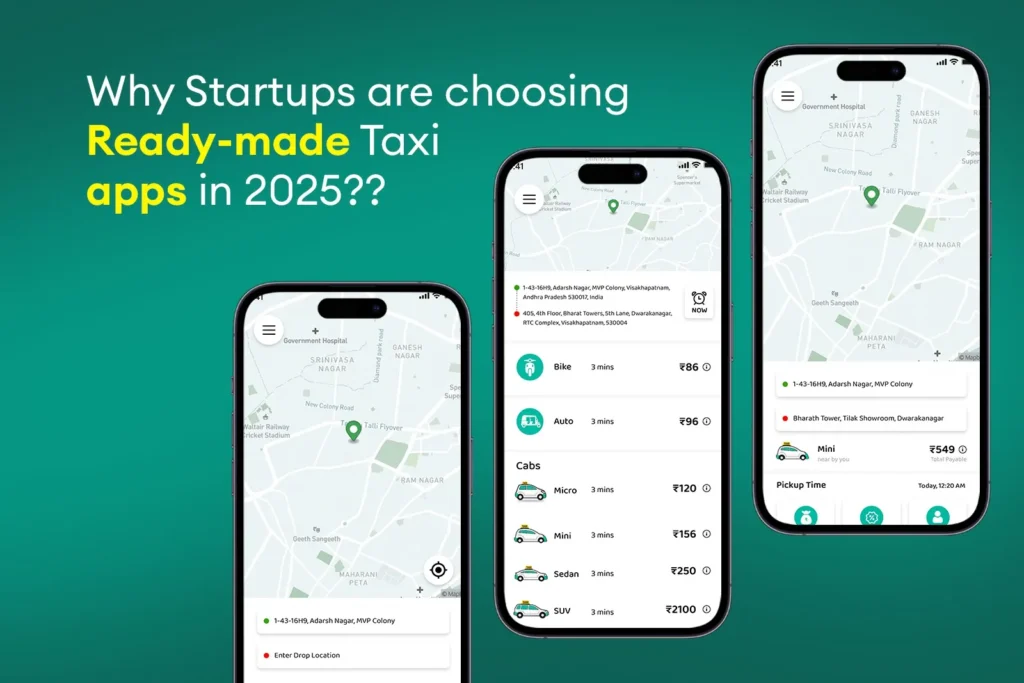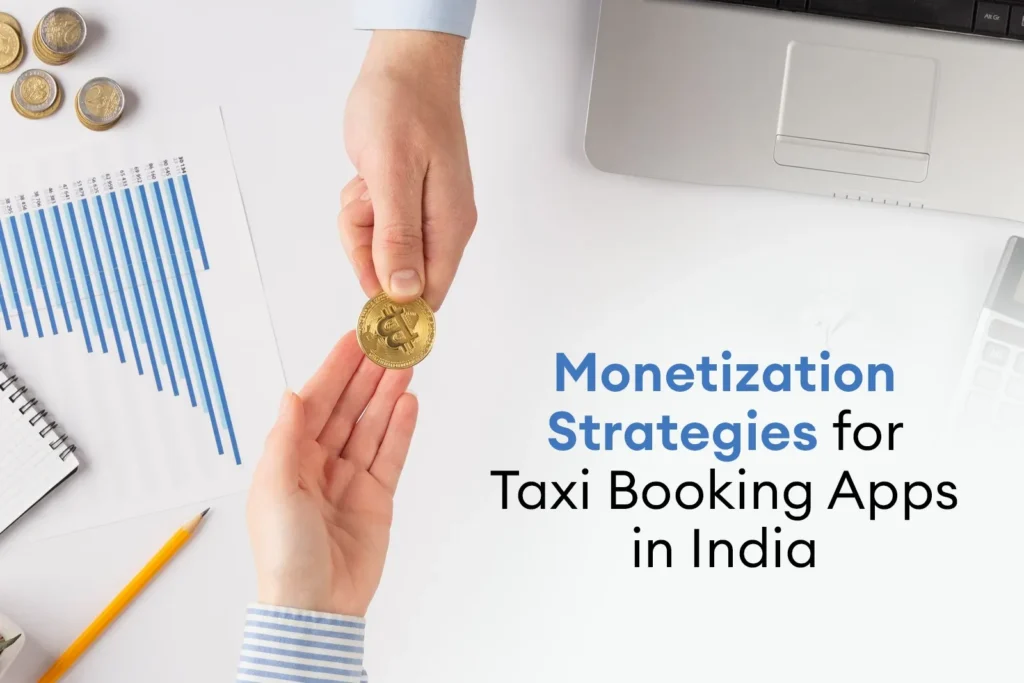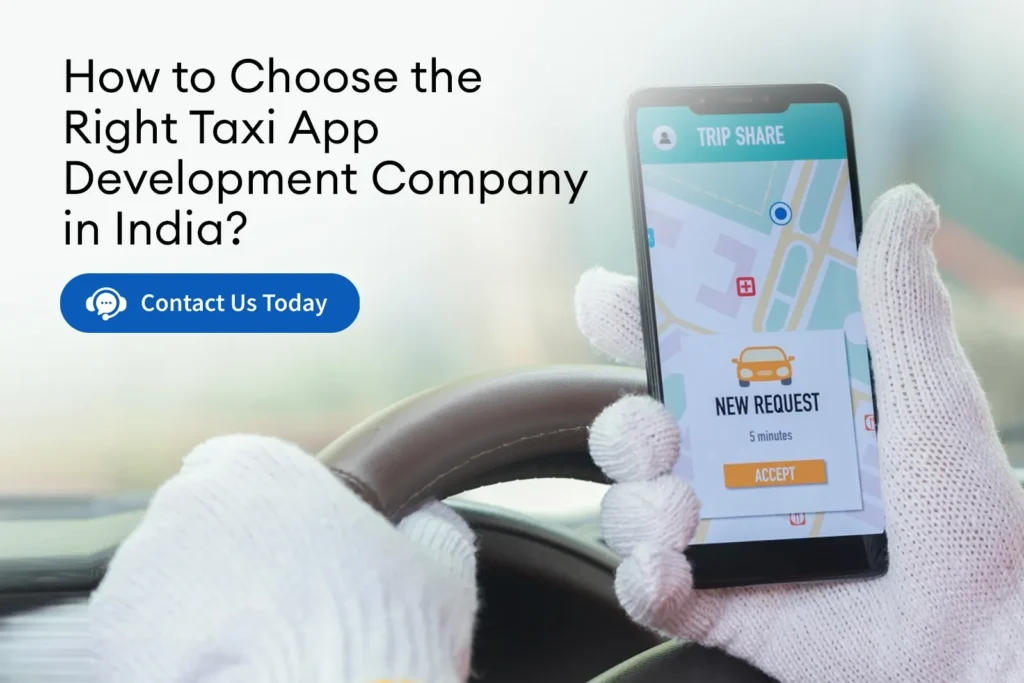In India’s fast-growing urban hubs and emerging Tier-2 cities, the way people move is changing—quickly. Ride-hailing apps have become a core part of daily life, replacing traditional cabs with seamless, on-demand digital experiences. For entrepreneurs, the opportunity is clear: India’s ride-hailing market is expected to hit $12.6 billion by 2025.
But building a taxi booking app isn’t just about launching a piece of software. It’s about solving problems at the intersection of mobility, infrastructure, and user trust. Whether you’re a founder with a fresh idea or an established operator planning to digitize your fleet, one question matters more than anything:
Can you build and scale a legally compliant, feature-rich, rider-friendly taxi app—fast?
If the answer needs to be “yes,” then this guide is for you.
The Taxi Ride in India: Beyond the Buzz

India’s transportation market is not a carbon copy of the West. While platforms like Uber and Ola dominate metros, there’s growing demand for regional, independent, and niche taxi services in underserved cities and towns. The boom is being driven by:
- Smartphone penetration in rural regions
- UPI adoption, even in low-income communities
- Rising demand for electric vehicles and sustainable transit
- Government support for digital public infrastructure
Yet most startups face the same uphill battle: custom app development is expensive, slow, and complicated. A full-stack taxi platform can take 6 months and tens of lakhs to build—before you even onboard your first driver.
That’s why readymade taxi booking solutions are disrupting the market. They’re giving entrepreneurs a shortcut to market—without compromising on performance or features.
What Your Taxi Booking App Must Get Right
At its core, a taxi platform connects three actors: riders, drivers, and administrators. But building something users trust—especially in a safety-sensitive, real-time environment—requires much more than syncing GPS signals and calculating fares.
Let’s break down what your app must nail:
For Riders
- Instant ride booking with precise pickup-drop location
- Real-time driver tracking
- Cashless payments (UPI, credit/debit cards, wallets)
- Trip history, in-app support, and safety features
- Local language support for Tier-2/3 users
For Drivers
- Simple ride request interface
- Navigation and route optimization
- Daily and weekly earning summaries
- Panic button and emergency contacts
- Onboarding workflow with document verification
For Admins
- Manage pricing models and surge algorithms
- Verify drivers, assign vehicles, and configure service zones
- View ride analytics, complaints, and earnings data
- Generate automated invoices, tax summaries, and compliance reports
This is why most founders underestimate the complexity of “building an Uber clone.” You’re not building an app; you’re building a business backbone.
Build vs Buy: Why Readymade Apps Are the Smarter Bet in 2025

A growing number of entrepreneurs are now skipping the custom development route and choosing readymade, white-label taxi solutions. The advantages aren’t just about speed—they’re about risk reduction and go-to-market readiness.
Here’s why:
- Faster launch: ColourMoon’s readymade apps can go live in under 15 days
- Lower capital risk: Costs start from a fraction of custom builds
- No technical team required: Hosting, backend, DevOps, security—all managed
- Scalable backend: Tested to handle hundreds of concurrent users
- Regulatory-ready: Features like KYC, GST, and emergency protocols are pre-built
- Custom-branded: Full control over UI, domain, logo, colors, and language
You’re not just buying code—you’re licensing a battle-tested business platform.
Legal Compliance Isn’t Optional (and ColourMoon Covers It)
Since the Aggregator Guidelines 2020 were issued by MoRTH, taxi apps are legally required to implement specific safety and operational protocols. These include:
- State-level aggregator registration
- KYC-compliant driver verification
- Panic button functionality and location sharing
- GST integration and tax invoices
- Working-hour limitations for driver welfare
- Data protection and secure payment flows
What Makes Taxi App Users Tick? Insights from the Ground
If you’re planning to operate in India, you need to understand local mobility behavior:
- In metros, convenience trumps cost. Riders want smooth UX, driver ratings, and payment flexibility.
- In Tier-2 cities, affordability is king—but app adoption is growing fast. Users here often prefer hybrid payment (cash + UPI), and prefer speaking in regional languages.
- For fleet operators, backend visibility is crucial. They want live trip data, earnings dashboards, and reporting tools that make managing drivers easy.
Another 2025 trend: multi-service blending. Many taxi platforms now offer food, grocery, or parcel delivery in off-peak hours, leveraging the same driver network. Your backend needs the flexibility to adapt.
Monetization Strategies for Taxi Booking Apps in India

One of the key challenges for any taxi app startup is identifying a revenue model that is sustainable, scalable, and suited to local market dynamics. While global players like Uber rely heavily on surge pricing and VC-funded burn models, Indian startups must adopt more grounded and flexible strategies—especially when operating in price-sensitive cities.
Taxi app monetization in India is not about choosing one revenue stream—it’s about layering multiple complementary models that align with rider expectations and driver incentives. The right mix can help improve margins, attract loyal drivers, and create long-term stability in competitive environments.
Here’s a breakdown of the most effective monetization models for taxi platforms in India:
Common Monetization Models for Indian Taxi Apps
| Monetization Model | Description | When to Use |
|---|---|---|
| Ride Commission | Platform takes a percentage (10–25%) of every ride fare | Standard model for metro and Tier-1 markets |
| Driver Subscription | Drivers pay a weekly or monthly fee to be active on the platform | Works well in Tier-2 cities or for zero-commission business |
| Dynamic Pricing (Surge) | Fare increases during high-demand periods (rain, traffic, weekends) | Ideal in urban zones with variable rider supply |
| Corporate Partnerships | Offer pre-booked rides for businesses (employee transport, hotel pickup) | Great for recurring revenue from enterprise clients |
| Ad Monetization | Display local business ads in rider app or wrap vehicles with branding | Useful when rider volumes are high; adds passive income |
| Loyalty & Referral Programs | Encourage repeat bookings and organic growth via incentives | Builds user base without direct marketing spend |
Startups don’t have to lock into just one strategy. For example, a fleet operator could combine driver subscriptions for steady revenue with surge pricing in high-demand zones, while offering corporate rides for recurring cash flow.
What’s important is that the technology supports it—and this is where ColourMoon’s readymade taxi app makes a difference. Every one of these models is already built into the admin panel, allowing startups to experiment, iterate, and optimize without developer intervention.
Want to know how these models would work for your target city or fleet size? Book a free strategy call with ColourMoon’s mobility team.
Revenue Models That Work in India
Taxi apps aren’t just about booking rides—they’re about building revenue engines. Here’s how startups monetize today:
- Commission-based rides: Take a cut (e.g., 20%) from each ride
- Driver subscriptions: Monthly fee to list and accept rides
- Dynamic pricing: Fare surges during peak hours or events
- Corporate rides: Offer transport services to businesses and IT parks
- Referral and loyalty rewards: Turn users into marketers
ColourMoon’s admin panel supports all these models—letting you mix and match based on your city, segment, or growth stage.
Why ColourMoon Is Built for Indian Startups
With 14+ years of experience and over 200+ app deployments, ColourMoon Technologies brings more than just code—it brings deep contextual understanding of Indian business models.
Here’s what makes it stand out:
- Pre-built, white-label taxi solution: Android, iOS, and web-based
- Fully customizable UI with your brand’s logo, theme, and domain
- Secure backend, real-time location tracking, and auto-scaling servers
- Integrated payment gateways: UPI, Paytm, GPay, and credit/debit cards
- Dedicated support team for post-launch updates and scalability
- Compliance-aligned design for smoother aggregator registration
And the best part: you can go live in under two weeks.
Final Word: The Market is Open—But Only for the Ready
In a space where timing, trust, and technology collide, speed matters—but so does strategy. India’s ride-hailing economy is still young, fragmented, and open to disruption—especially in regions where Ola or Uber don’t dominate.
If you’re serious about launching your own taxi app, the biggest mistake is trying to reinvent the wheel. The smarter move? Leverage a proven system, reduce your time to market, and focus on what matters most: building your customer base and scaling fast.
ColourMoon’s readymade taxi booking solution gives you the infrastructure, reliability, and flexibility to do just that—without burning through capital or time.
Ready to Launch? Book a Free Demo Today
Take the first step. See how your branded taxi app could be live in just a few days—with all the features you need and none of the stress you don’t.

Frequently Asked Questions: Taxi Booking App Development in India
1. Is launching a taxi booking app in India still profitable in 2025?
Yes. India’s ride-hailing market continues to grow, projected at $12–13 B by 2025, offering robust opportunities for regional platforms and niche mobility services focused on underserved cities.
2. How much does it cost to develop a taxi app in India?
A basic MVP version typically takes ₹8–12 lakh (2–3 months), whereas full-featured custom builds can cost ₹20–30 lakh or more with a 3–5 month timeline.‡ White‑label options like ColourMoon start at a fraction of that cost. But Colourmoon can do a custom budget based on your need
3. What essential features should a taxi app include?
A complete taxi booking platform should offer:
- Rider app: real‑time tracking, fare estimation, multiple payment options, trip history, language support
- Driver app: request management, navigation, earnings dashboard, SOS alert
- Admin panel: pricing controls, user & fleet management, compliance, analytics
These features form the backbone of a user‑trusted, scalable platform.
4. How do I choose the right development partner for my taxi app?
Look for partners with:
- Proven mobility domain experience
- Transparent cost breakdowns and clear scope documentation
- Strong security, NDA, and IP transfer policies
- Post-launch support and compliance capabilities
These criteria ensure accountability, quality, and timely delivery
5. Are there hidden costs in building a taxi booking app?
Yes. Beyond initial development, costs accrue from:
- Third‑party integrations (payment systems, maps)
- Server hosting and scaling
- Ongoing maintenance and updates
- Regulatory compliance and licensing
White‑label systems like ColourMoon reduce such risks by bundling most essentials upfront.
6. What legal and safety compliance must a taxi app meet in India?
Key mandates include:
- Aggregator registration with state transport authorities
- Comprehensive driver KYC and police verification
- Emergency/panic button functionality in apps
- GST‑compliant invoicing and fare transparency
- Driver working hour limits and data privacy standards
Failing to meet these can result in penalties or operational shutdowns.
7. Which monetization models work best for taxi apps in India?
Effective revenue strategies include:
- Commission per ride (typically 10–25%)
- Driver subscription plans (weekly/monthly fees)
- Dynamic surge pricing during peak demand
- Corporate ride contracts
- Ad monetization and referral programs
Choosing the proper mix lets platforms optimize revenue and retain engagement.
8. Should I build a custom app or use a white-label solution?
With rising competition and tighter timelines, many founders prefer white-label platforms due to:
- Substantially lower upfront investment
- Rapid launch (often within 10–15 days)
- Built-in compliance, scalability, and proven architecture
- Reduced technical risk
Building custom may offer more flexibility—but it can delay market entry and increase costs.
9. What tech stack ensures a robust taxi app backend?
Modern taxi apps often use:
- Backend frameworks: Node.js, Python (Django), or Java Spring Boot
- Hybrid app frameworks: Flutter or React Native
- Real-time services: WebSockets or Firebase
- Cloud hosting: AWS, GCP, or Azure with autoscaling
This stack supports performance, real-time capabilities, and cross-platform reach.


